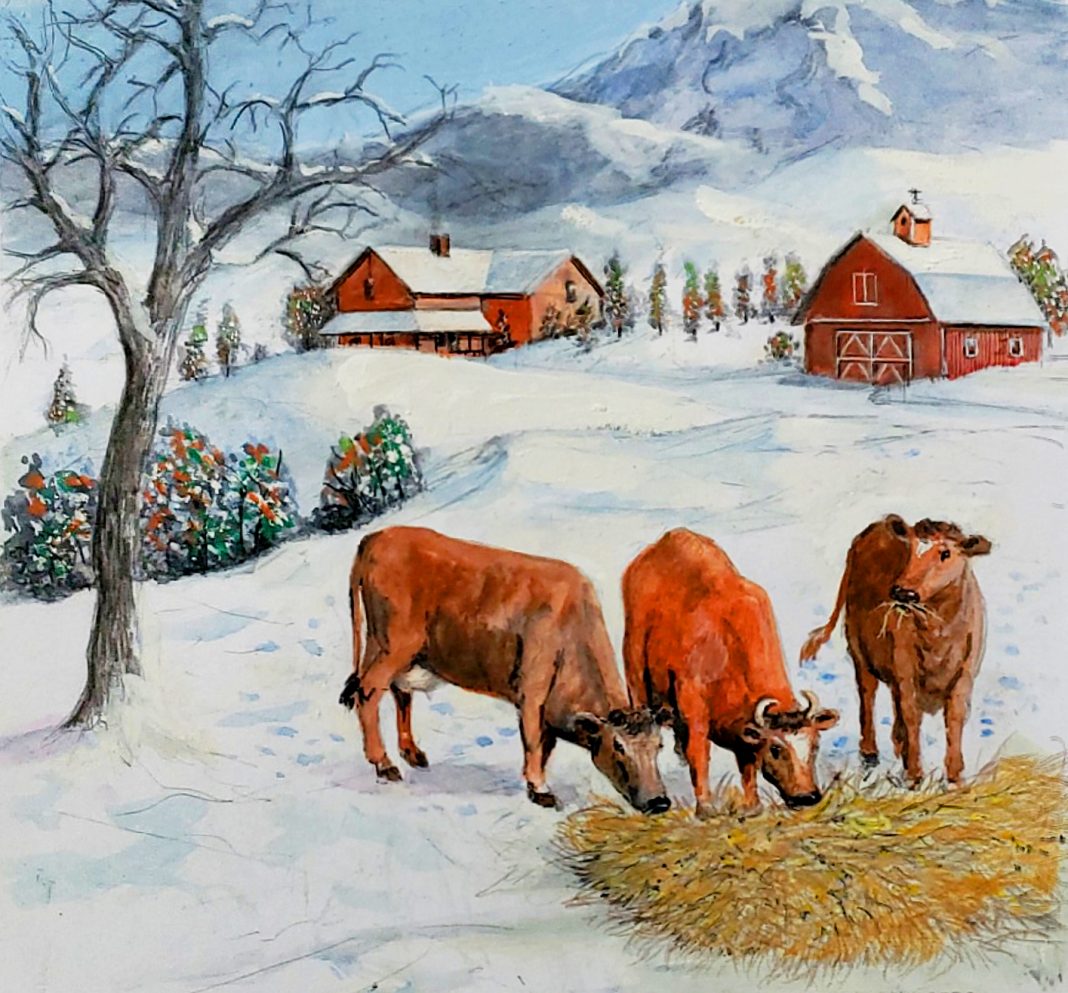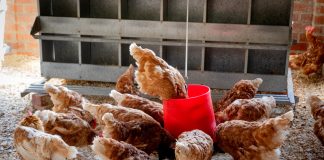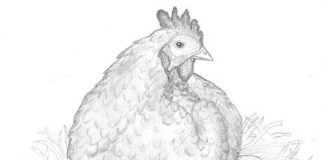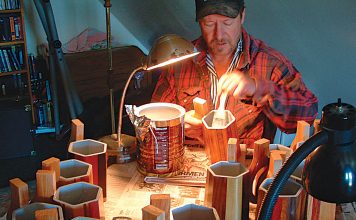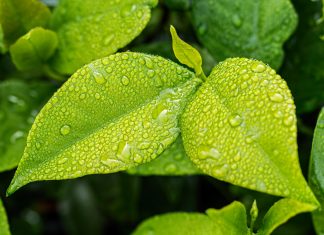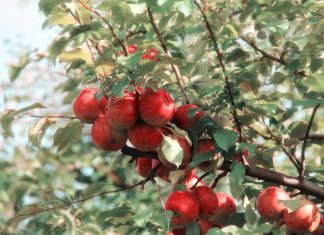| Issue #64 • July/August, 2000 |
There is a big difference between home dairying to produce food for your family and dairying to sell milk or milk byproducts to others. Since milk and dairy products are some of the most closely monitored farm products, laws and legal requirements pertaining to their sale and processing are staggering. For this reason, this article addresses milk and milk byproducts for personal consumption only.
In terms of productivity, few animals can compare with the homestead dairy animal. From this humble creature comes pure milk, providing valuable nutrition for you and your family. Milk is also the foundation of many other delicious foods like cheese, butter, yogurt, pudding, sauces, custards, ice cream, milk soups, and gravies, as well as nonedibles like livestock feed, homemade paint, and soaps.
Cattle and goats are the two most commonly utilized dairy animals in the United States. Each species requires housing, fencing, and feeding, as well as a firm commitment to regular, twice daily milking. This is a very important consideration to remember when acquiring a dairy animal. Regardless of which you may choose to own, the milk and milk byproducts from each are handled basically the same way.
Basic equipment

Stainless steel is the material of choice for milking buckets and for other containers used in milk processing. It is also the most expensive and beyond the budget for many. Fortunately food grade plastic containers and glass will work fine, but they should be seamless since bacteria and germs can collect in seams. Clean utensils are a major factor in milk flavor and one of the biggest causes of “off-flavor” milk. Always pre-rinse buckets, containers, and other utensils in lukewarm water as soon as possible after using. This pre-rinsing will help prevent milkstone deposits from forming, which can be very difficult to remove. Next wash and scrub thoroughly in warm soapy water, then rinse. Follow with another rinse in scalding water and air dry upside down.
Any milk intended for human consumption should be strained. Milk strainers can be purchased which use disposable paper filters. One of the smaller models can be purchased with 300 filters for less than $15. You can use a regular kitchen strainer lined with several layers of a clean fabric like a dishcloth, muslin, or diaper. Always rinse and boil the cloth afterwards. Glass jars, like regular canning jars or gallon jars can be used for storing milk. Because of the difficulty in cleaning, plastic commercial milk jugs should not be used. You will also need buckets or other containers for washing and rinsing the animal’s udder, as well as a cloth and towel for drying. Commercial udder wash is available, but most home dairies use a small amount of mild antibacterial soap like baby wash added to the water. A small amount of vinegar is also sometimes regularly added to the rinse water.
Milk handling
It is important to keep milk as clean and sanitary as possible. Clean utensils, washing and drying the udder, brushing the animal to remove loose hair and debris, fresh bedding, and keeping long hair clipped from the udder will all help to keep your milk clean and reduce the bacteria count. Always strain milk immediately after milking.
Pasteurization is a bacteria-killing process that kills germs. Some scoff at the notion of pasteurization, maintaining that if you have healthy animals it is not necessary. Others are adamant about it, insisting that all milk is potentially dangerous unless pasteurized. Convenient electric pasteurizers are available that you simply plug in or you can use a double boiler set-up and pasteurize on your stovetop. Use a thermometer and heat the milk to 161 degrees Fahrenheit. Stir milk to be sure it is 161 degrees throughout, then hold at this temperature for 20 seconds. Remove the milk from the heat and cool quickly by placing in ice water.
If you choose not to pasteurize, immediately chill milk by placing the strained milk in a container of ice water. Ideally you should chill the milk to a temperature of 40 degrees Fahrenheit within one hour. Store milk, both pasteurized and unpasteurized, in the coldest part of the refrigerator.
Milk can be canned or frozen for those times when your dairy animals are not producing milk. To can milk, fill jars to ½ inch from the top and process for 10 minutes at 10 pounds pressure or process in a boiling water bath for 60 minutes. Processed milk will not taste like fresh milk but it is suitable for cooking. To freeze milk, use jars, plastic containers, or freezer bags. Allow for expansion (like freezing any liquid) and let thaw completely before drinking for better taste.
Butter and cream
Butter is made from the cream part of the milk. Cream is the globules of fat that are suspended throughout milk. Cream is harder to remove from goat’s milk than from cow’s milk because of the difference in the milk’s structure, not the cream content. There are two basic ways to remove the cream from either animal’s milk: by skimming or by separating.
Cream can generally be removed from cow’s milk by skimming. Simply let the milk set undisturbed for 24 hours, then skim off the cream, which will have risen to the top. When you remove cream in this manner, you do not get it all because some will stay mixed with the milk, but this cream is denser than that which stays mixed and great for making butter or whipped cream. If goat’s milk is left to set for 24 hours, some cream will rise to the top, but not nearly as large of an amount.
Using a cream separator is the most thorough way of removing the cream from milk. If you use a separator for goat’s milk, be sure it is one that can be adjusted for goat’s milk or one that is designed specifically for goat’s milk. Separators work on the principle of centrifugal force and are available in both freestanding and tabletop models. If buying a used one, be sure all the parts are there. Separators have as many as 18 disks, (depending upon the model) that the milk is forced through. Many separators commonly seen at auctions and antique shops do not have all the disks.
Churning the separated cream makes butter. Churns are traditionally dasher churns which are some sort of crock with a wooden dasher, drum churns which are a revolving drum with paddles inside, and hand-cranked churns, which are gear-driven paddles inside a jar. The famous Daisy churn from years gone by is an example of a gear-driven churn. Electric and nonelectric versions of the Daisy can be found, while some people routinely use their kitchen mixers or blenders at low speeds. If you do not have a butter churn, a quart jar and lid will work nicely. Let 24-hour old cream reach 60 degrees in temperature, then fill the churn (or jar) not over half full. Rhythmically and steadily slosh the cream back and forth. Butter will usually begin appearing after 20-30 minutes of churning, resembling small clumps in the milk.
After churning, the butter must be “worked” to remove the milk from it. This is critical in making good butter that will remain tasty. Remove butter from the milk and place in a bowl of cold water. Gather the butter into a ball, then flatten into a layer. Repeat as if kneading bread and change the water frequently. As the milk is rinsed away the butter will begin to feel waxy. Continue working until the water remains clear. Remove from the water and knead with a spatula to remove as much water as possible. Salt can also be added at this time and worked into the butter if you wish. Pat dry and shape into a patty (or use a mold). Cover and refrigerate or wrap and freeze for later use.
Cream can be frozen after separating and utilized later as butter or whipped cream. Let thaw completely before using.
Yogurt
If you have never tasted homemade yogurt, you are in for a real treat. Yogurt made from whole milk is far superior in taste to the commercial variety. If you are using cow’s milk for yogurt you should skim it first. Goat’s milk will be fine as is. Adding “friendly” bacteria to the milk (in this instance it is Acidophilus) causes the milk sugar (lactose) to turn to lactic acid and “sour” the milk, producing yogurt.
Acidophilus can be purchased as cultured or non-cultured bacteria. The easiest way however is to simply purchase a container of commercial yogurt like Dannon plain yogurt with acidophilus, as a starter. After that you can save your own culture from each batch for the next.
Yogurt making tips
- Yogurt made from pasteurized milk is often more successful because the “friendly” bacteria is not competing with the “unfriendly.” This is important if you plan to save starter from each batch for the next one. Yogurt can be made immediately after pasteurizing by cooling the milk from 161 to 110 degrees F and then proceeding with making the yogurt, bypassing the warming step that follows in the directions below.
- Be careful not to use milk that is too hot when making yogurt. Temperatures over 115 degrees F can kill the acidophilus.
- Yogurt likes to be kept evenly warm and not disturbed during incubation. Electric incubators are available, but covered jars placed in a warm spot, (100-110 degrees) will work just as well. Some folks choose to place the jars on a heating pad and cover with a towel, others use their ovens or other heat source. I have never had a failure when using an insulated cooler. Simply place the covered jars in a cooler and add 100-105 degree water until it reaches the necks of the jars. Close the cooler and let set in a warm place until the incubation is complete.
- Adding more starter will not make the yogurt thicker, only more sour. Powdered milk or gelatin can be added for thickness.
For plain unflavored yogurt, the first step is to warm milk to 110 degrees F over low heat. Next add 1 heaping teaspoon of cultured starter for each quart of milk and stir gently. Remove from heat and pour into clean warm jars and place in a warm spot to incubate. Do not disturb. Yogurt is ready when thickened, usually 6-8 hours later. Refrigerate after incubation. Adding ½ cup of powered milk or ½ pack of dissolved gelatin per quart of milk will make the yogurt thicker and more like commercial yogurt. This should be added before incubation. After incubation is complete, fruits, honey, vanilla, etc. can be added to the yogurt. Save some of the yogurt for starter in your next batch before adding any of these.
Flavored yogurt is easiest made by using flavored gelatin (like Jell-o brand gelatin). First prepare plain, unflavored yogurt as directed above, but do not add thickeners. Next dissolve 8 tablespoons of flavored gelatin in ½ cup of cool water and bring to a boil. Add to the yogurt before incubation. Fruit or jam can also be placed in the bottom of the container like commercial yogurts if you wish.
Cheese
Cheese making is an art in itself, but many of the simpler varieties can easily be made at home. Homemade cheeses are generally divided into three basic groups: soft, semi-soft, and hard. All cheeses contain the same basic ingredientsmilk, cultures or “friendly” bacteria, rennet, and salt. What makes cheeses different is the type of culture used and the way it is processed. Some specific types of cheeses require the addition of special powders or mold in addition to the basic culture. Colorings are also available to make the cheese yellow.
Rennet
Milk coagulation is caused by adding rennet, which is either animal or vegetative based. It is available in either tablet or liquid form and is always diluted with a small amount of water before use. Both tablets and liquid come with dilution instructions and strengths but generally are diluted as 3 drops of liquid rennet or ½ tablet to ¼ cup of cool water.
Cultures
Cheese cultures are usually divided into two basic groups. Like Acidophilus in yogurt, they change the milk sugar (lactose) into lactic acid. Mesophilic culture is the one most often used in homemade cheese making. It does not like high heat and is used in soft cheeses, Colby, and Cheddar. Buttermilk is also made with Mesophilic culture and commercial cultured buttermilk can be interchanged in cheese recipes that call for Mesophilic cultures. Thermophilic cultures are used in cheeses that require high heat when processing like Mozzarella, Swiss, Provolone, and Parmesan.
Cheese cultures can be purchased as a freeze-dried powder that is simply added to the milk when making cheese. When kept in the freezer it will last indefinitely.
Soft Cheeses
The easiest cheeses to make at home are the soft cheeses. They require no pressing, aging, or special humidity and temperature control. They do not take a lot of time in actual preparation, require little attention, and most of the equipment needed you probably already have. To make soft cheese, begin by heating 5 quarts of whole milk to 80 degrees F in a large kettle. Stir in ½ cup of commercial cultured buttermilk or 1/8 teaspoon of freeze-dried Mesophilic DVI culture. Add 2 tablespoons of diluted rennet, (dilute according to manufacturer’s directions) and stir well. Cover and let set at room temperature for 10-12 hours. As coagulation occurs, a layer of whey will appear on the top of the curds. (Whey is used in Ricotta cheese and can also be fed to livestock.) Line a colander or other strainer with muslin, cheesecloth, or a clean pillowcase. Then pour the curds into it. Gather the corners of the cloth and tie with cord, then hang to drain. Draining can take 8 hours; when complete, the curds will be of a consistency similar to cream cheese.

The cheese is now ready to be seasoned or flavored if you wish. Additives like garlic, chives, minced onion, hot peppers, powdered ranch dressing mix, and dill make tasty cheeses. Work the additives thoroughly through the cheese and shape into a patty or mound. Plain cheese can be used as cream cheese in recipes or frozen for later use.
Cottage cheese requires a little more preparation than basic soft cheese. Begin by warming 1 gallon of milk to 90 degrees F and add 1 cup commercial cultured buttermilk or ¼ teaspoon freeze-dried Mesophilic DVI culture. Next add 3 drops of liquid or ½ tablet of rennet (dilute first in a small amount of water) to the milk, cover and let set in a warm place to coagulate. When curds appear, use a long knife and cut into small cubes about ½ to 1 inch in diameter. Cut across the curds one way, then the other to form squares. Let the curds sit for 30 minutes, occasionally stirring slowly and gently to prevent them from clumping. Return to heat to firm up the curds. This is a matter of personal taste. The temperature at which you stop heating will determine the firmness of the curds. Curds are cooked when they no longer are custard-like in the center. Heat slowly, and gently stir frequently. Stop heating around 115 degrees F for softer cheese, 120 degrees for the firmer, “farmer style” cottage cheese. Dump the curds into a colander with small holes and drain off the whey. Rinse off with cold water and drain again. Add salt to taste and refrigerate after draining has stopped.
Other uses for milk
Pigs, chickens, and other fowl love milk. If you have more milk than you can use, it is an eagerly devoured and nutritious feed that will help cut down on the feed bill. Most livestock seem to prefer it clabbered, which is easily accomplished with fresh milk by adding a glug of vinegar to a bucket of milk and permitting it to sit for an hour or so.
Milk paint is very popular for interior decorating and for restoring furniture, both antique and faux antique. To make whitewash from milk, add 3 oz. of slake lime to ½ gallon of milk. Stir well, then add 3 oz. of linseed oil. Colored paint can be made by adding pigment to the above until the desired shade is obtained. Pigment is available in many hardware and paint stores, as well as art stores. You can make your own pigment from natural sources like clay, roots, and other vegetative matter. A smoother finish can be obtained if the paint is strained before using and lightly sanded after applying.
Adding milk to lye soap makes it kinder to the skin. To make wonderful milk and honey soap, first dissolve ¼ cup honey in ½ cup hot water. Next pour into a large enamel kettle (do not use aluminum) and add 2-½ cups cold milk. Stir well with a smooth piece of wood or wooden spoon, and then slowly add 6 oz. (by weight) of lye, being careful not to breathe the fumes. The mixture will begin heating and get very hot. After it cools to 70 degrees F, warm 7 cups of rendered lard (or a combination of lard and palm or olive oil) to 80 degrees and slowly pour into the mixture. Stir constantly until it resembles thick honey, then pour into molds. Insulate the soap with blankets or a layer of newspapers so it will cool slowly. Allow to sit for 48 hours, then unmold and allow to cure for 6 weeks before using. Always work in a well-ventilated area when making lye soap and avoid breathing the fumes or letting the lye splash on you!
Sources:
Caprine Supply, P.O. Box Y, Desoto, KS 66018.
New England Cheesemaking Supply, P.O. Box 85, Ashfield, MA 01330.
Both these sources carry a variety of supplies and equipment for the home dairy. Many farm supply houses also carry a line of home dairying equipment.


